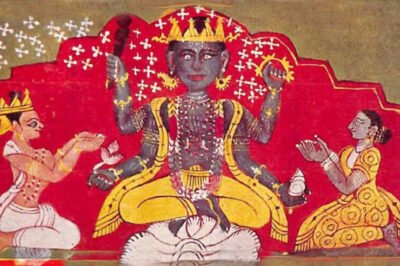Vaishnavism in Assam has played a profound role in shaping the region’s art, culture, and religious practices. Introduced by the 15th-century saint and reformer Srimanta Sankardeva, the Neo-Vaishnavism movement transformed Assam’s spiritual landscape by promoting the worship of Lord Vishnu and emphasizing devotion (bhakti) over ritualistic practices. This religious revolution not only altered Assamese spiritual life but also left a lasting impact on the Assamese religious art, music, dance, and overall cultural identity.
The Bhakti Movement in Assam and Its Spread
The Bhakti movement in Assam began with Srimanta Sankardeva, who sought to simplify religious practices and make spirituality accessible to all, irrespective of caste and social status. His teachings, which focused on devotion to Lord Krishna (an incarnation of Vishnu), led to the rise of Neo-Vaishnavism in Assam. This movement played a crucial role in the social and religious life of the Assamese people, and its influence can still be seen today in the region’s art, music, literature, and performances.
Vaishnavite Monasteries and Their Role in Assamese Culture
One of the most significant contributions of Vaishnavism in Assam is the establishment of Vaishnavite monasteries, also known as Satras. These Satras became cultural hubs where religious, artistic, and educational activities were conducted. Monks in the Satras, called Bhakats, were instrumental in preserving and promoting Assamese religious art, including traditional dance forms like Sattriya, which was initially performed as a form of worship in the monasteries.
The Satras also played a key role in spreading Neo-Vaishnavism across Assam, becoming centers of learning and cultural preservation. Through these institutions, the teachings of Sankardeva were disseminated, and artistic expressions, such as dance, drama, and music, were nurtured as part of the spiritual practice. Today, the Satras continue to be guardians of Assam’s Vaishnavite heritage, preserving age-old traditions and promoting the cultural history of Assam.
Assamese Religious Art: A Reflection of Vaishnavism
The influence of Vaishnavism in Assam is deeply embedded in the region’s religious art forms. Assamese religious art flourished under the Neo-Vaishnavite movement, with the creation of traditional masks, murals, manuscripts, and iconography that depict scenes from the life of Lord Krishna and other Vaishnavite deities. The art often portrays religious narratives, highlighting the connection between devotion and artistic expression.
Sankardeva himself contributed to the development of Assamese art by creating the Ankia Naat, a form of devotional drama that combines music, dance, and dialogue. The use of vibrant masks and elaborate costumes in these performances is a hallmark of Assamese religious art. This art form continues to be performed during religious festivals and in Satras, bridging the gap between spiritual practice and cultural celebration.
Sattriya Dance: A Gift of Vaishnavism
One of the most enduring contributions of Vaishnavism in Assam is the classical dance form known as Sattriya, which originated in the Vaishnavite monasteries. Initially performed as a form of worship, Sattriya dance combines storytelling with graceful movements and is based on the teachings and spiritual themes of Sankardeva’s Bhakti movement. Over time, this dance form gained recognition as one of India’s eight classical dance traditions, showcasing the deep connection between Assam’s religious and cultural heritage.
Cultural Legacy of Vaishnavism in Assam
The spread of Neo-Vaishnavism brought a renaissance to the cultural history of Assam, transforming its religious practices while fostering a thriving artistic and cultural scene. From devotional songs and dramatic performances to artistic creations that reflect deep spiritual devotion, the influence of Vaishnavism in Assam is inseparable from its artistic legacy. Festivals like Janmashtami, Holi, and Raas are celebrated with vibrant performances of Sattriya dance and Bhakti music, bringing the teachings of Sankardeva to life in a culturally rich manner.
Conclusion: Vaishnavism’s Enduring Influence
Vaishnavism in Assam has had a profound and lasting influence on the region’s art and culture. Through the creation of Vaishnavite monasteries, the promotion of Assamese religious art, and the development of classical dance forms like Sattriya, the Neo-Vaishnavism movement has preserved and enriched the cultural history of Assam. As Assam continues to celebrate and uphold its Vaishnavite traditions, the region remains a vibrant example of how spirituality can inspire enduring cultural expression.








Leave a Reply